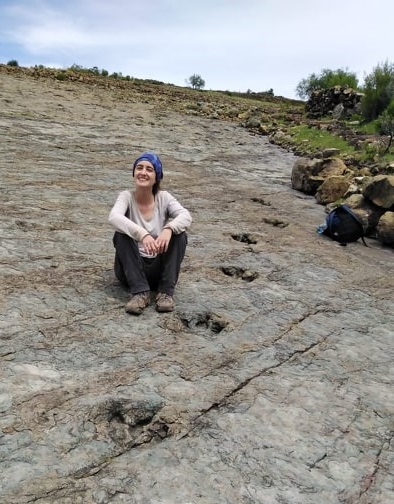NGT’s Rose returns from another amazing adventure in South America.
Last June (2019) I took extended leave from NGT and headed off on a long adventure that took me from Honduras in Central America, through South America to Chile, returning home via New Zealand last month.
For the first two months of my trip I worked for Operation Wallacea undertaking bat surveys at the long-running biological survey site in Cusuco National Park. I was part of a team of eight bat scientists from Mexico, Spain, Chile, Honduras, United States, Belgium, and Australia. We worked alongside around 50 other science staff making up the terrestrial mammal, bird, invertebrate, herpetofauna, and vegetation survey teams.
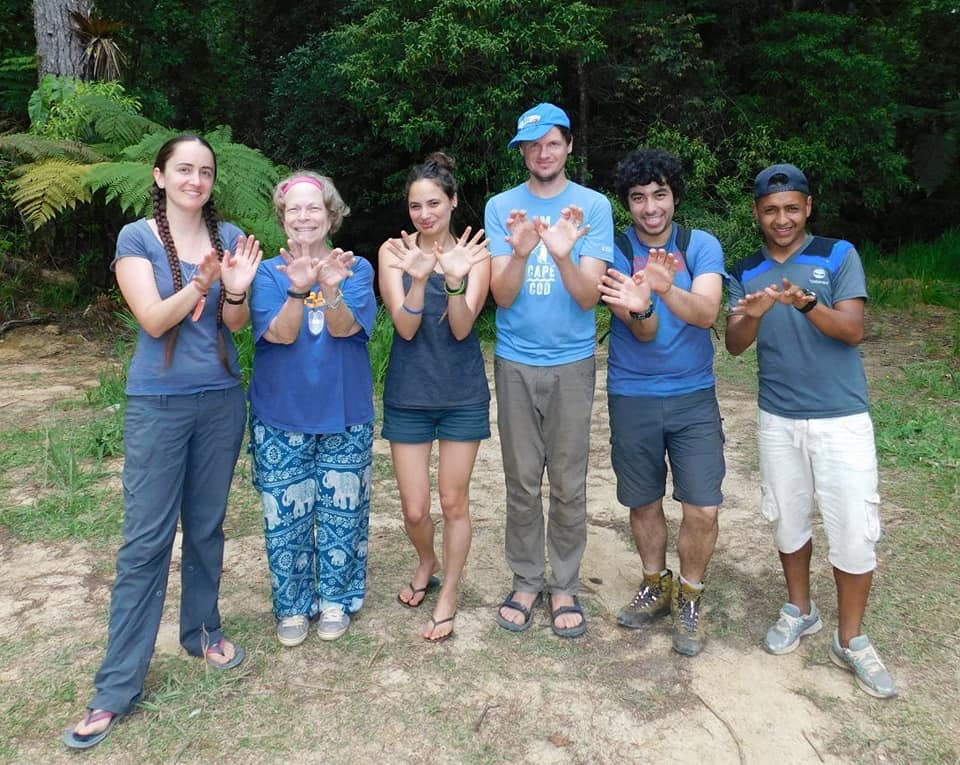
The bat team of Cusuco 2019: me (Rose), Kevina, Pamela, Danny, Clem, Landito. Absent: Zeltia and Elena.
While I had done the same job two years beforehand in Mexico (I wrote about it here), I found the experience in Honduras much more challenging – but equally rewarding.
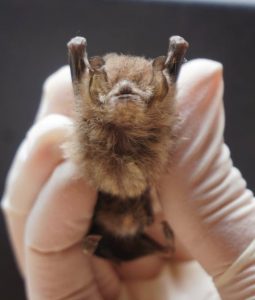
Mexican funnel-eared bat (Natalus lanatus). Photo: D. Haelewaters
Cusuco National Park is situated in the rugged Meredon mountain range and the reaching the camps and survey sites involved a lot of strenuous hiking, which sometimes pushed me close to my limits. However, I loved being involved once again with such a group of passionate scientists helping to educate the next generations as more than 200 high school and uni students spent time with us during the season.
We surveyed using mist nets each night from 6:30 pm to 12:30 am, catching an average of six bats per night. Mist netting is a common technique used to capture bats where a series of fine mesh nets are positioned across flyways (tracks or streams) in the forest. Usually working in groups of two, we rotated between five camps in different parts of the park, and caught 39 species in total – including one new species for the park, the Mexican funnel-eared bat. Excitingly, we believe this is the first record not just in the reserve, but for the country!
After finishing up with Opwall in early August, I made my way over the next few weeks to Panama City from where I took a boat trip to Colombia via the picture-perfect Guna Yala (San Blas) Islands. A very fun four days later we arrived in a tiny Caribbean village in the far north-west of Colombia.
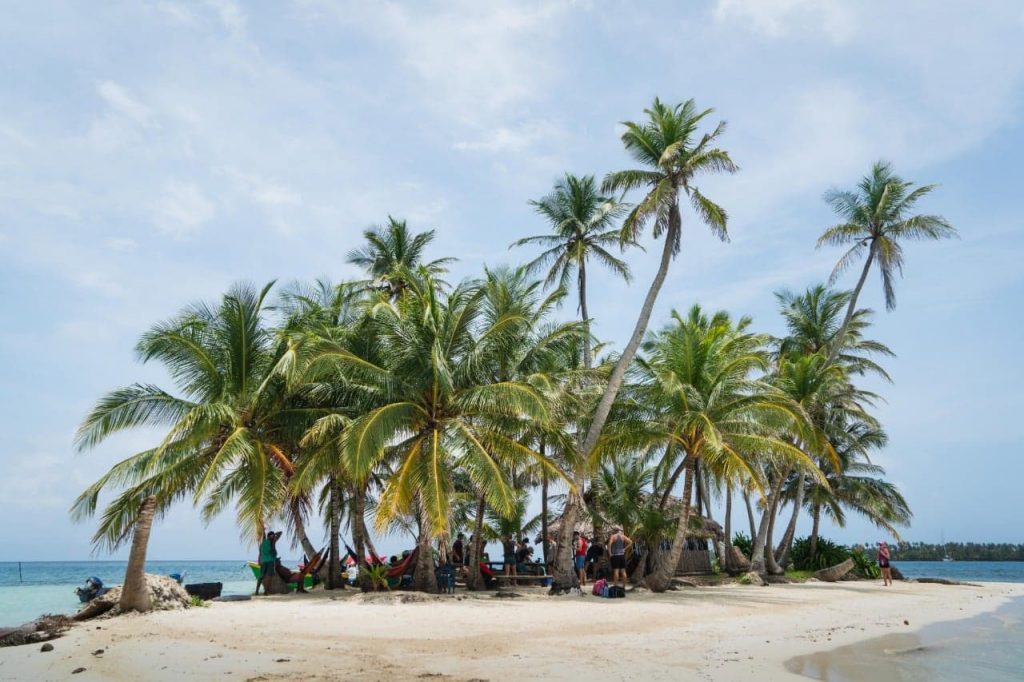
An island of the Guna Yala archipelago where we stopped for lunch on day one. Photo: R. Mengels
Colombia, once a dangerous country, is now one of the most popular travel destinations in South America. Its location at the top of the continent, the juncture between Central and South America, and the many varied ecosystems from Caribbean and Pacific coasts, to mountains and desert, means it is one of the most biodiverse regions in the world. I travelled to the northernmost point of South America, Punta Gallinas, where the desert meets the ocean and was excited to see my first flamingos (I went on to see flamingos of different species in every country that I visited in South America: Ecuador, Peru, Bolivia, and Chile). In the main cities of Colombia, Medellin and Bogota, I enjoyed visiting friends I worked with two and seven years previously!
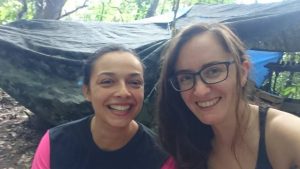
It was fantastic to reunite in Medellin with my bat buddy, Daisy, from my previous trip to Mexico
After some political unrest in Ecuador forced me to make some last minute changes to my plans (jumping off the bus heading to the border at midnight…), I eventually made it to Quito a few weeks later than planned and began looking for a last-minute deal on a Galapagos Islands boat trip. Just three days later I was arriving at Baltra Island, where the main airport of the Galapagos is located, and searching for my tour group. The next two weeks were just mind blowing; I struggle to describe just how amazing visiting the Galapagos Islands was. The abundance and diversity of animals astounded me. You could be walking down the main street of the Islands’ biggest town and bump into a sea lion, while marine iguanas sunned themselves on the hot rocks at the shore nearby, with blue-footed boobies dive-bomb fishing in the bay, and black-tipped reef sharks swimming by! I took hundreds of photos and lamented the fact that I didn’t have an underwater camera, as snorkelling trips were just as incredible.
Just a few unforgettable moments were seeing a marine iguana feeding on sea grass underwater and the strange way they move using just their tails, swimming with very curious sea lions and turtles that, on the other hand, weren’t interested in us at all, and making a speedy getaway from an endemic flightless cormorant which was feeling threatened by, and attacking my friend’s flippers. The Galapagos Islands is not a budget destination by any means, but it was by far the highlight of my trip, and indeed a life highlight so far!
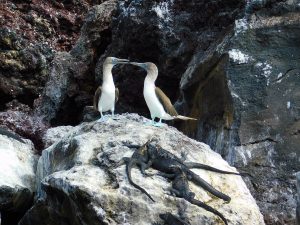
Two Galapagos endemic species: blue-footed boobies and marine iguanas
Another place I was very excited to visit was the Amazon jungle. The world’s largest tropical rainforest spans several countries and I visited two separate areas in Ecuador and Peru. Pink river dolphins, macaws and countless other bird species, sloths, six different species of monkeys, anacondas, and capybaras were just some of the amazing wildlife I saw.

A huge highlight of my time in the Amazon: a beautiful 6.5 metre green anaconda (Eunectes murinus)
In December, my sister joined me for a month in Peru where we enjoyed (and sometimes struggled with) some stunning hikes in the Sacred Valley and Huaraz regions. Hiking at altitudes of up to 4700 metres is tough! By this time, it was the rainy season as my photos of Machu Picchu attest.

One of the clearer moments at Machu Picchu.
If I was asked to choose a favourite country I couldn’t; I loved each for different reasons, but Bolivia was an unexpected delight. So many travellers skip Bolivia completely, or just visit to do a tour of the Salt Flats of Uyuni, but I believe they are really missing out. I finally got to see Andean Condors near Samaipata, one of the largest birds in the world with a wingspan of 3.3 metres. After expecting to see them in Colca Canyon, Peru, it was great to tick this one off my wish list.
Seeing ancient dinosaur footprints not just once, but in two locations, was another reason why I loved Bolivia. I would have liked to have stayed, but alas, I was running out of time. My nine months in Latin America ended with a four day trip through the Altiplano (High Plains) of the south-west of the country, ending at the very Insta-worthy Salt Flats. From Uyuni I made my way quickly to Santiago de Chile where I caught up with some old friends before taking a flight to New Zealand for the next leg of my journey.
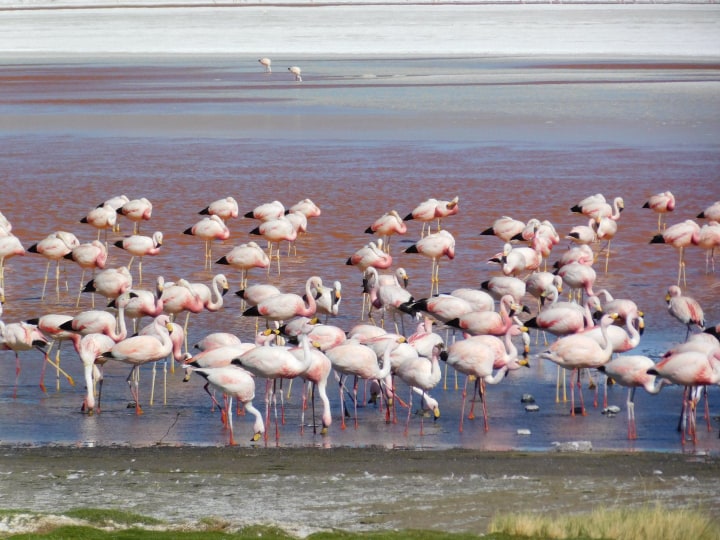
Two different species of flamingos at Laguna Colorada, Bolivia
When the location of the 2020 Australasian Bat Society conference was announced back in May last year, I was happy to adjust my plans to get there. Who could resist an event in Te Anau, in the Fiordlands region of the South Island? Around 100 fellow battos were in attendance at the three-day conference and presentations were diverse and interesting. I presented a comparison of the Opwall sites I have worked at, entitled Comparing bat communities at two sites within the Mesoamerican biodiversity hotspot: Calakmul Biosphere Reserve, Mexico and Cusuco National Park, Honduras.
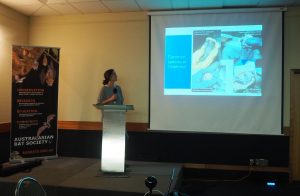
Presenting at the ABS conference in Te Anau
The post-conference field trip coincided with my birthday which was celebrated with chocolate after midnight, and getting to see both of New Zealand’s two bat species, the long-tailed bat and the lesser short-tailed bat. The latter is particularly interesting as, unlike most bats, it spends a lot of time hunting on the ground; males also sing to attract mates! Check out the short video below to see footage shot during the field trip of a male doing his courtship performance.
After the conference I spent another week in the stunning South Island. I would love to explore there further one day. By this time, it was mid-March and Covid-19 situation was rapidly developing. I am thankful I arrived home when I did. It was the trip of a lifetime, albeit with a strange ending. After my adventures away from NGT, I’m looking forward to getting involved again and it’s good to be back!


